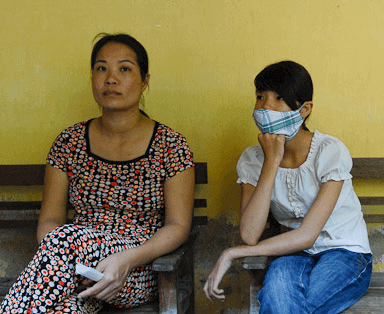Ashley BennettGHTC
Ashley Bennett is a Policy and Advocacy Officer at GHTC.
As people across the globe celebrate World TB Day this week, several groups are highlighting the fact that the current tools to prevent, test, and treat tuberculosis (TB) are greatly outdated. The world has been “beyond antiquated in our approach” to developing new TB tools. That is how Anthony Fauci, director of the National Institute of Allergy and Infectious Diseases (NIAID) at the National Institutes of Health, described a not-so-bygone era in the history of TB research and development (R&D). Fauci was speaking at a briefing organized by the Critical Path to TB Drug Regimensin partnership with the Global Alliance for TB Drug Development (TB Alliance), US Agency for International Development (USAID), NIAID, and the US Food and Drug Administration (FDA). During the event, representatives from key US government agencies made the case for the urgent need for new technologies in the TB toolkit.
“It can’t take 40 years for us to get our next TB drug,” Janet Woodcock, director of the FDA’s Center for Drug Evaluation and Research stated, highlighting one of the lesser known facts about TB—that the newest drug was approved over 40 years ago. “We need to capitalize on the momentum we have,” she added. Many current TB drugs are toxic and have serious interactions with other medicines, and most regimens take over six months to complete. The disease kills 1.4 million people and infects 8.8 million each year.

Joining Fauci and Woodcock were Robert Clay, deputy assistant administrator for Global Health at USAID; Mel Spigelman, CEO of the TB Alliance; and Christine Lubinski, vice-president for Global Health at the Infectious Diseases Society of America (IDSA). All speakers stressed the urgent need to conduct R&D for new and improved TB prevention and treatment options. They also lauded the use of partnerships between non-profit organizations, private pharmaceutical companies, and US Government agencies in the development of new drugs and other technologies.
Fortunately, the TB Alliance, a GHTC member and product development partnership (PDP), announced the launch of a new combination drug trial that could pave the way for the next generation in TB treatment approaches. The group has launched stage II trials for NC-002—a novel drug regimen combining a well-known generic TB drug with two new drug candidates. The trials will take place in South Africa, Tanzania, and Brazil, and results will be known in roughly a year. This trial is also the very first of its kind. It will test both patients with ‘drug sensitive’ TB, who do respond to current treatments, along with patients with multi-drug resistant TB (MDR-TB), who do not respond well to currently available treatment, to determine differences in the groups’ response to the new drug regimen. As Spigelman outlined, the potential impact of this trial is immense—it could reduce the costs of treating MDR-TB by 90 percent, as well as decrease treatment time by over 80 percent.
This exciting news in TB drug development follows closely on the heels of new funding for new prevention tools. Last week, GHTC member Aeras announced that it received a grantfrom the Bill & Melinda Gates Foundation of up to $220 million over five years to conduct R&D for new TB vaccines. Aeras stressed that it is developing new TB vaccines against the backdrop of a significant increase in drug-resistant strains of the disease worldwide.
Additionally, today Aeras—along with the TuBerculosis Vaccine Initiative and the STOP TB Partnership—also announced a new blueprint for TB vaccine development. "To develop a new TB vaccine that will be fully effective, researchers, donors, and other partners will need to collaborate and coordinate their efforts as they address tough research questions," said Dr. Lucica Ditiu, executive secretary of the Stop TB Partnership. "We cannot allow ourselves to be overwhelmed by either the costs or the obstacles. It is time to be bold and dare to do more in TB, especially in supporting the development of a new vaccine."
As we recognize World TB Day, the need for new and better prevention, diagnostic, and treatment options for the disease is clearer than ever before. And it’s encouraging that GHTC members like Aeras and the TB Alliance—along with many other partners—are at the forefront of R&D efforts to create these desperately needed health tools.